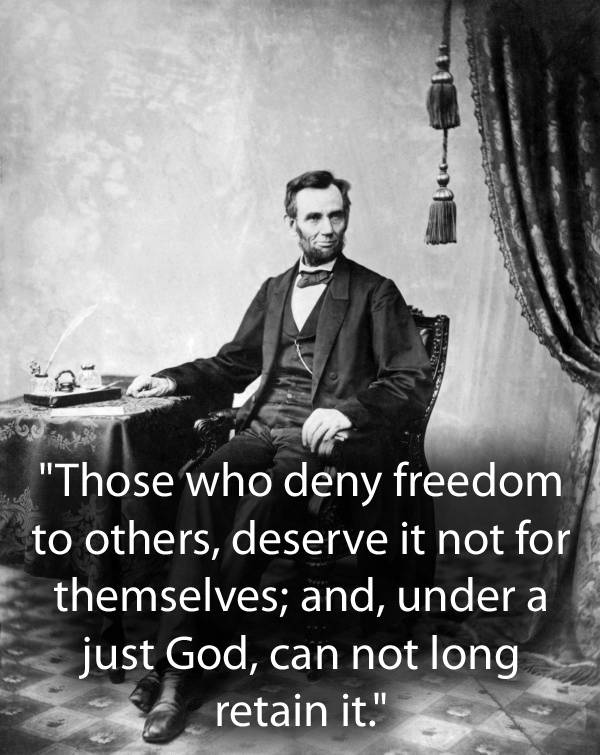Blog
https://www.youtube.com/watch?v=m9mI4zLKPaI
more...Scores of baby stars shrouded by dust are revealed in this infrared image of the star-forming region NGC 2174, as seen by NASAs Spitzer Space Telescope. Some of the clouds in the region resemble the face of a monkey in visible-light images, hence the nebula’s nickname: the “Monkey Head.” However, in infrared images such as this, the monkey disappears. That’s because different clouds are highlighted in infrared and visible-light images.
Found in the northern reaches of the constellation Orion, NGC 2174 is located around 6,400 light-years away. Columns of dust, slightly to the right of center in the image, are being carved out of the dust by radiation and stellar winds from the hottest young stars recently born in the area.
Spitzers infrared view provides us with a preview of the next clusters of stars that will be born in the coming millennia. The reddish spots of light scattered through the darker filaments are infant stars swaddled by blankets of warm dust. The warm dust glows brightly at infrared wavelengths. Eventually, these stars will pop out of their dusty envelopes and their light will carve away at the dust clouds surrounding them.
In this image, infrared wavelengths have been assigned visible colors we see with our eyes. Light with a wavelength of 3.5 microns is shown in blue, 8.0 microns is green, and 24 microns in red. The greens show the organic molecules in the dust clouds, illuminated by starlight. Reds are caused by the thermal radiation emitted from the very hottest areas of dust.
Areas around the edges that were not observed by Spitzer have been filled in using infrared observations from NASAs Wide Field Infrared Survey Explorer, or WISE.

Veronica “Randy” Crawford (born February 18, 1952, Macon, Georgia) is an American jazz and R&B singer. She has been more successful in Europe than in the United States, where she has not entered the Billboard Hot 100 as a solo artist. Her only appearance on the Hot 100 chart was in 1979 as a guest vocalist on The Crusaders‘s top 40 hit “Street Life”. She has had five Top 20 hits in the UK, including her 1980 number 2 hit, “One Day I’ll Fly Away“, as well as six UK Top 10 albums. Despite her American nationality, she won Best British Female Solo Artist in recognition of her popularity in the UK at the 1982 Brit Awards. In the late 2000s she received her first two Grammy Award nominations.
Crawford first performed at club gigs from Cincinnati to Saint-Tropez, but made her name in mid 1970s in New York, where she sang with jazzmen George Benson and Cannonball Adderley. She signed with Columbia Records and released her first single, “Knock On Wood” / “If You Say the Word” in 1972. Adderley invited her to sing on his album, Big Man: The Legend Of John Henry (1975). During a brief tenure at Columbia Records, Crawford recorded “Don’t Get Caught in Love’s Triangle”. She is also one of the vocalists on Fred Wesley & The Horny Horns – A Blow For Me, A Toot To You (1977).
In 1978, Crawford sang vocals on “Hoping Love Will Last”, the opening song on side two of Please Don’t Touch!, which was the second solo album by the former Genesis guitarist Steve Hackett.
She led R&B veterans the Crusaders on the transatlantic hit “Street Life” (1979). A specially re-recorded version was featured in the soundtrack for the films Sharky’s Machine and Jackie Brown, and appeared in commercials in the early 2000s. She later recorded for Warner Bros. Records. Crawford was named the ‘Most Outstanding Performer’ at the 1980 Tokyo Music Festival. Crawford also recorded the love theme (“People Alone”) for the film soundtrack of The Competition on MCA Records in 1980.
https://www.youtube.com/watch?v=z0jCm4gMtVA
more...Buddy Cage (February 18, 1946 – February 5, 2020) was an American pedal steel guitarist, best known as a longtime member of the New Riders of the Purple Sage.
Popular both as a performer and session musician, he played with many bands and recording artists, including Anne Murray, Bob Dylan, Brewer & Shipley, David Bromberg, and the Zen Tricksters.
Buddy Cage learned to play pedal steel guitar at a young age. By the mid-1960s he was working as a professional musician, both onstage and as a session player for the Arc Records label.When the folk music duo of Ian and Sylvia decided to go electric in 1969, he joined their band, known as the Great Speckled Bird. Great Speckled Bird was part of the Festival Express concert tour in 1970. From 1969 to 1972, Cage also recorded four albums with Anne Murray, and one album with Brewer & Shipley.
It was on the Festival Express tour that the New Riders of the Purple Sage became acquainted with Cage. The New Riders were a psychedelic influenced country rock band that had been founded by Jerry Garcia of the Grateful Dead, along with John Dawson and David Nelson. The New Riders and the Dead would perform concerts together, with Garcia playing pedal steel for the New Riders, then playing electric guitar and singing with the Dead.
more...Irma Thomas (born February 18, 1941) is an American singer from New Orleans. She is known as the “Soul Queen of New Orleans”.
Thomas is a contemporary of Aretha Franklin and Etta James, but never experienced their level of commercial success. In 2007, she won the Grammy Award for Best Contemporary Blues Album for After the Rain, her first Grammy in a career spanning over 50 years.
Born Irma Lee, in Ponchatoula, Louisiana, United States, as a teenager she sang with a Baptist church choir. She auditioned for Specialty Recordsat the age of 13. By the time she was 19, she had been married twice and had four children. Keeping her second ex-husband’s surname, she worked as a waitress in New Orleans, occasionally singing with bandleader Tommy Ridgley, who helped her land a record deal with the local Ron label. Her first single, “Don’t Mess with My Man”, was released in late 1959, and reached number 22 on the US Billboard R&B chart.
more...De De Pierce (February 18, 1904 – November 23, 1973) was an American jazz trumpeter and cornetist. He is best remembered for the songs “Peanut Vendor” and “Dippermouth Blues”, both with Billie Pierce.
Pierce was born Joseph De Lacroix Pierce in New Orleans, Louisiana, United States. Pierce’s first gig was with Arnold Dupas in New Orleans in 1924. During his time playing in city nightclubs, he met Billie Pierce, who became his wife as well as a musical companion; the two were the house band at the Luthjens Dance Hall from the 1930s through the 1950s. They released several albums together but stopped performing in the middle of the 1950s due to illness, which left De De Pierce blind. By 1959 they had returned to performing, and De De Pierce toured with Ida Cox and played with the Preservation Hall Jazz Band, before further health problems ended his career. He died in November 1973, at the age of 69.
more...Freedom for Latinos, Muslims, LGBTQ, Handicapped, Homeless, Disenfranchised, First Nation People, African Americans and all humans of planet earth. Remove the Fake Dictator before he removes You!

Abell 2744, nicknamed Pandora’s Cluster, is a giant galaxy cluster resulting from the simultaneous pile-up of at least four separate, smaller galaxy clusters that took place over a span of 350 million years. The galaxies in the cluster make up less than five percent of its mass. The gas (around 20 percent) is so hot that it shines only in X-rays. Dark matter makes up around 75 percent of the cluster’s mass.
This cluster also shows a radio halo along with several other Abell clusters. It has a strong central halo, along with an extended tail, which could either be relic radiation, or an extension of the central halo.
Renato Dupke, a member of the team that discovered the Cluster, explained the origin of the name in an interview: “We nicknamed it ‘Pandora’s Cluster’ because so many different and strange phenomena were unleashed by the collision.”

Jeremy Webster “Fred” Frith (born 17 February 1949) is an English multi-instrumentalist, composer, and improvisor.
Probably best known for his guitar work, Frith first came to attention as one of the founding members of the English avant-rock group Henry Cow. He was also a member of the groups Art Bears, Massacre, and Skeleton Crew. He has collaborated with a number of prominent musicians, including Robert Wyatt, Derek Bailey, the Residents, Lol Coxhill, John Zorn, Brian Eno, Mike Patton, Lars Hollmer, Bill Laswell, Iva Bittová, Jad Fair, Kramer, the ARTE Quartett, and Bob Ostertag. He has also composed several long works, including Traffic Continues (1996, performed 1998 by Frith and Ensemble Modern) and Freedom in Fragments (1993, performed 1999 by Rova Saxophone Quartet). Frith produces most of his own music, and has also produced many albums by other musicians, including Curlew, the Muffins, Etron Fou Leloublan, and Orthotonics.
Frith is the subject of Nicolas Humbert and Werner Penzel’s award-winning 1990 documentary Step Across the Border. He also appears in the Canadian documentary Act of God, which is about the metaphysical effects of being struck by lightning. Frith has contributed to a number of music publications, including New Musical Express and Trouser Press, and has conducted improvising workshops across the world. Frith’s career spans over four decades and he appears on over 400 albums. He still performs actively throughout the world.
Frith was awarded the 2008 Demetrio Stratos Prize for his career achievements in experimental music. The prize was established in 2005 in honour of experimental vocalist Demetrio Stratos, of the Italian group Area, who died in 1979. In 2010 Frith received an honorary doctorate from the University of Huddersfield in West Yorkshire, England in recognition of his contribution to music. Frith was Professor of Composition in the Music Department at Mills College in Oakland, California until his retirement in 2018. He is the brother of Simon Frith, a music critic and sociologist, and Chris Frith, a psychologist at University College London.
more...Noble “Thin Man” Watts (February 17, 1926 – August 24, 2004) was an American blues, jump blues and rhythm and blues saxophonist. He primarily played tenor saxophone. The AllMusicjournalist, Bill Dahl, considered Watts “one of the most incendiary […] fire-breathing tenor sax honkers” of the 1950s.
Born in DeLand, Florida, Watts studied violin and trumpet in his youth, later switching to sax. He gained musical training at Florida A&M, where he played in the school’s marching band with future saxophonist Cannonball Adderley. Hired to play with The Griffin Brothers after college, Watts began his professional career. During the 1950s, he would work with Lionel Hampton, Paul “Hucklebuck” Williams, Dinah Washington, Jerry Lee Lewis, Buddy Holly, Chuck Berry, the Everly Brothers, and others. He also appeared on American Bandstand with Johnny Mathis in 1957,[4]and performed in the house band at a Harlem club owned by boxer Sugar Ray Robinson.
https://www.youtube.com/watch?v=bj0iXWLZJgU
more...Boniface Ferdinand Leonard “Buddy” DeFranco (February 17, 1923 – December 24, 2014) was an Italian American jazz clarinet player. One of few clarinetists playing bebop, DeFranco was described by critic Scott Yanow as the leading American jazz musician on his instrument from the 1940s until Eddie Daniels came to prominence in the 1980s. In addition to his own work as a bandleader, DeFranco led the Glenn Miller Orchestra for almost a decade in the 1960s and ’70s. Born in Camden, New Jersey, DeFranco was raised in South Philadelphia. He was playing the clarinet by the time he was 9 years old and within five years had won a national Tommy Dorsey swing contest.
He began his professional career just as swing music and big bands—many of which were led by clarinetists like Artie Shaw, and Benny Goodman—were in decline. While most jazz clarinet players did not adapt to this change, DeFranco successfully continued to play clarinet exclusively, and was one of the few bebop clarinetists.
In 1950, DeFranco spent a year with Count Basie‘s Septet. He then led a small combo in the early 1950s which included pianist Sonny Clark and guitarist Tal Farlow. In this period, DeFranco recorded for MGM, Norgran and Verve; the latter two labels were owned by Norman Granz.
During the years 1960-64, DeFranco released four innovative quartet albums as co-leader with the accordionist Tommy Gumina. He was bandleader of the Glenn Miller Orchestra from 1966 to 1974, under the name, “The World Famous Glenn Miller Orchestra, Directed By Buddy DeFranco”. He also performed with Gene Krupa, Art Blakey, Tommy Dorsey, Count Basie, Charlie Barnet, Art Tatum, Oscar Peterson, Lennie Tristano, Dodo Marmarosa, Terry Gibbs, Charlie Parker, Dizzy Gillespie, Miles Davis, Eddie Daniels, Putte Wickman, Billie Holiday and many others, and released dozens of albums as a leader.
https://www.youtube.com/watch?v=a3eCncO9HAY
more...https://www.youtube.com/watch?v=MCTGE6qzh_s
more...In 1787, astronomer William Herschel discovered this unusual planetary nebula: NGC 2392. More recently, the Hubble Space Telescope imaged the nebula in visible light, while the nebula was also imaged in X-rays by the Chandra X-ray Observatory. The featured combined visible-X ray image, shows X-rays emitted by central hot gas in pink. The nebula displays gas clouds so complex they are not fully understood. NGC 2392 is a double-shelled planetary nebula, with the more distant gas having composed the outer layers of a Sun-like star only 10,000 years ago. The outer shell contains unusual light-year long orange filaments. The inner filaments visible are being ejected by strong wind of particles from the central star. The NGC 2392 Nebula spans about 1/3 of a light year and lies in our Milky Way Galaxy, about 3,000 light years distant, toward the constellation of the Twins (Gemini).

Shahin Alavi was born in 16th Feb.1961 in Iran.
He began his studying the guitar with Mr.shahrokh Partovi at the age of 17 in Tehran ,and continued playing it under the guidance of Bagher Moazen . His perseverance in playing this instrument has made him master it thoroughly .
He started teaching the Flamenco guitar in Bahman Art Center in 1991 and two years later held some concerts and devoted himself entirely to music .In 1995, because of intending to compose his own music, he was so much interested in playing another kind of musical instrument and so he initiated his studies of the Oud under the guidance of Mr. Rajabzadeh, Mohamad Firouzi and Mojtaba Mirzadeh.
He was able to play the Oud easily, in regards to his guitar playing experience and consequently composed and performed several Oud concerts around Iran . In 2003 he started his work in the field of World music( with Iranian roots)
with “EA” ensemble (Oud, Guitar, Violin, Percussion) and continued with another ensemble( Oud, Piano, Flute-Recorder) and made his first Album under the name Sormeh.
Being prosperous in teaching music , he has been successful in theatrical music composition as well .
He has also received some Iranian music lessons from Mr. Masoud Shenas .
William Ballard Doggett (February 16, 1916 – November 13, 1996) was an American jazz and rhythm and blues pianist and organist.[2] He is best known for his compositions “Honky Tonk” and “Hippy Dippy”, and variously working with the Ink Spots, Johnny Otis, Wynonie Harris, Ella Fitzgerald, and Louis Jordan. Doggett was born in Philadelphia, Pennsylvania, United States.[1] His mother, a church pianist, introduced him to music when he was nine years old. By the time he was fifteen, he had joined a Philadelphia area combo, playing local theaters and clubs while attending high school.
Doggett later sold his band to Lucky Millinder, and worked during the 1930s and early 1940s for Millinder, Frank Fairfax and arranger Jimmy Mundy.In 1942 he was hired as the Ink Spots‘ pianist and arranger.
Toward the end of 1947, he replaced Wild Bill Davis as the pianist for Louis Jordan‘s Tympany Five. It was in Jordan’s group that he first achieved success playing the Hammond organ. In 1950, he is reputed to have written one of Jordan’s biggest hits, “Saturday Night Fish Fry“, for which Jordan claimed the writing credit.
more...Machito (born Francisco Raúl Gutiérrez Grillo, February 16, 1908 – April 19, 1984) was a Latin jazz musician who helped refine Afro-Cuban jazzand create both Cubop and salsa music. He was raised in Havana with the singer Graciela, his foster sister.
In New York City, Machito formed the band the Afro-Cubans in 1940, and with Mario Bauzá as musical director, brought together Cuban rhythms and big band arrangements in one group. He made numerous recordings from the 1940s to the 1980s, many with Graciela as singer. Machito changed to a smaller ensemble format in 1975, touring Europe extensively. He brought his son and daughter into the band, and received a Grammy Award in 1983, one year before he died.
Machito’s music had an effect on the lives of many musicians who played in the Afro-Cubans over the years, and on those who were attracted to Latin jazz after hearing him. George Shearing, Dizzy Gillespie, Charlie Parker and Stan Kenton credited Machito as an influence. An intersection in East Harlem is named “Machito Square” in his honor.
Machito gave conflicting accounts of his birth. He sometimes said he was a native Cuban from Havana. Other accounts place his birth in Tampa, Florida, making him an American of Cuban ancestry. He may have been born in 1908 in the Jesús María district of Havana or in Tampa, 1909 in the Marianao Beach district of Havana or in Tampa, 1912 in Tampa or Havana, or even 1915 in Havana.
more...More Posts
- Al Foster
- World Music Ali Farka Touré
- Daily Roots Gregory Isaacs
- Cosmos M31 JWST
- Mick Taylor
- Billy Harper
- Cedar Walton
- Big Sid Catlett
- World Music Manamba Kanté
- Daily Roots Sugar Minot
- Martin Luther Day 2023
- Cosmos UGC 7983
- Sade
- Roy Lanham
- Barbara Lynn
- World Music Soweto Gospel Choir
- Daily Roots Burning Spear
- Cosmos M1
- Earl Hooker
- Queen Ida